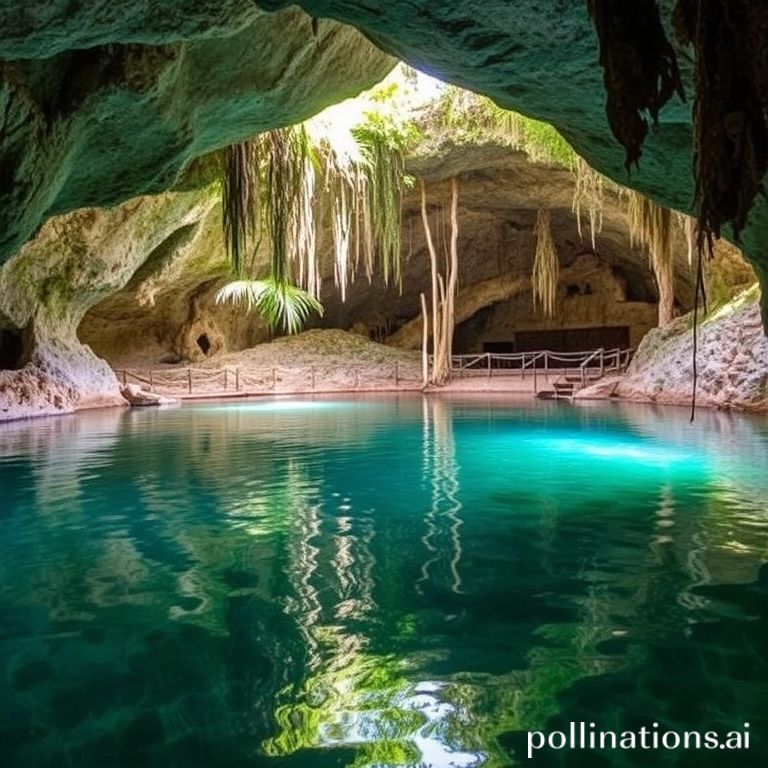Mexico, a land of vibrant culture and breathtaking landscapes, holds secrets beneath its surface – a mesmerizing world of caves and cenotes. These natural wonders, formed over millennia, offer a unique glimpse into the earth’s artistry and provide unforgettable experiences for adventurers and nature enthusiasts alike. From the Yucatan Peninsula’s crystal-clear cenotes to the vast cave systems of Chiapas, Mexico’s subterranean realms are waiting to be explored.
Whether you’re a seasoned diver seeking underwater thrills or a curious traveler yearning for a refreshing swim in a mystical oasis, Mexico’s caves and cenotes promise an adventure unlike any other. Prepare to be amazed by the stunning formations, the ethereal light filtering through hidden openings, and the sheer beauty of these subterranean paradises.
What are Cenotes?
Cenotes are natural sinkholes formed by the collapse of limestone bedrock, revealing underground freshwater pools. These geological formations are particularly abundant in the Yucatan Peninsula, where they were once sacred to the ancient Maya civilization. The Maya believed cenotes were gateways to the underworld and used them for rituals and water sources.
Types of Cenotes
- Open Cenotes: These cenotes resemble natural pools, exposed to the sky and surrounded by lush vegetation. They are ideal for swimming and snorkeling.
- Semi-Open Cenotes: These cenotes have partially collapsed roofs, allowing some sunlight to filter through. They offer a mix of open-air and cave-like environments.
- Cave Cenotes: These cenotes are entirely underground, accessible through narrow entrances. They are popular among experienced divers and offer a unique cave diving experience.
- Grotto Cenotes: Similar to cave cenotes but often with more natural light and easier access, making them suitable for less experienced swimmers and snorkelers.
Must-Visit Cenotes in Mexico
Mexico boasts an array of stunning cenotes, each with its own unique charm and appeal. Here are a few of the most remarkable cenotes you shouldn’t miss:
- Cenote Dos Ojos, Tulum: Famous for its crystal-clear waters and extensive cave system, Dos Ojos (Two Eyes) is a paradise for divers and snorkelers.
- Gran Cenote, Tulum: This popular cenote offers a mix of open-air and cave environments, making it ideal for swimmers of all levels. Its turquoise waters and intricate rock formations are truly mesmerizing.
- Cenote Ik Kil, Yucatan: Located near Chichen Itza, Ik Kil is a stunning open cenote with cascading vines and a dramatic setting. It’s a perfect place to cool off after exploring the ancient Mayan ruins.
- Cenote Suytun, Yucatan: Famous for its stone walkway that extends into the cenote, Suytun offers a unique photo opportunity and a chance to experience the cenote’s mystical atmosphere.
Exploring Mexico’s Caves
Beyond the enchanting cenotes, Mexico is also home to a network of incredible cave systems, offering thrilling adventures for spelunkers and nature enthusiasts. These caves are adorned with stunning stalactites, stalagmites, and other unique formations, showcasing the earth’s artistic power.
Notable Caves to Explore
- Grutas de Cacahuamilpa, Guerrero: One of the largest cave systems in the world, Grutas de Cacahuamilpa boasts impressive chambers, towering rock formations, and an underground river.
- Grutas de Tolantongo, Hidalgo: These caves feature thermal hot springs and a unique tunnel system, allowing visitors to relax and rejuvenate while exploring the subterranean world.
- Sistema Ox Bel Ha, Riviera Maya: One of the longest underwater cave systems in the world, Ox Bel Ha is a paradise for experienced cave divers, offering a challenging and rewarding adventure.
Tips for Visiting Caves and Cenotes
To make the most of your cave and cenote adventures in Mexico, keep these tips in mind:
- Wear appropriate clothing: Bring swimwear, comfortable walking shoes, and a light jacket or sweater, as caves can be cool and damp.
- Bring eco-friendly sunscreen: Protect your skin from the sun’s harmful rays without damaging the delicate ecosystem of the cenotes.
- Respect the environment: Avoid touching the rock formations, littering, or disturbing the wildlife.
- Hire a guide: Consider hiring a local guide who can provide valuable insights into the history, geology, and ecology of the caves and cenotes.
- Check water conditions: Be sure to check the water conditions of the cenotes before swimming, especially after heavy rainfall.
Conclusion
Mexico’s caves and cenotes offer a unique and unforgettable travel experience. These subterranean wonders provide a glimpse into the earth’s hidden beauty and offer a chance to connect with nature in a profound way. Whether you’re swimming in the crystal-clear waters of a cenote or exploring the depths of a vast cave system, you’re sure to be captivated by the magic of Mexico’s underground world.
Ready to discover more hidden gems in Mexico? Subscribe to our newsletter for exclusive travel tips and insider information!
IMAGE: A wide-angle shot of Cenote Dos Ojos in Tulum, Mexico. Crystal-clear turquoise water fills the cavern. Sunlight streams through openings in the cave ceiling, creating ethereal light rays that illuminate the underwater formations. Divers explore the depths with underwater lights. The scene is peaceful and awe-inspiring. The overall mood is mystical and adventurous. Style: Natural, high-resolution photography.


